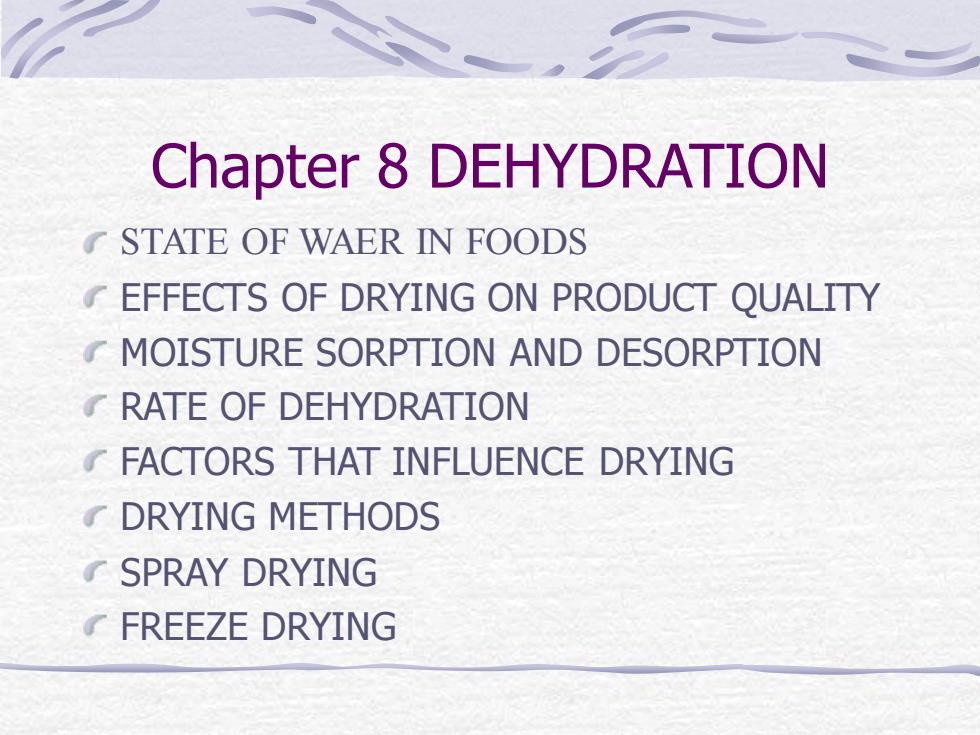
Chapter 8 DEHYDRATION STATE OF WAER IN FOODS EFFECTS OF DRYING ON PRODUCT QUALITY MOISTURE SORPTION AND DESORPTION RATE OF DEHYDRATION FACTORS THAT INFLUENCE DRYING DRYING METHODS SPRAY DRYING FREEZE DRYING
Chapter 8 DEHYDRATION STATE OF WAER IN FOODS EFFECTS OF DRYING ON PRODUCT QUALITY MOISTURE SORPTION AND DESORPTION RATE OF DEHYDRATION FACTORS THAT INFLUENCE DRYING DRYING METHODS SPRAY DRYING FREEZE DRYING
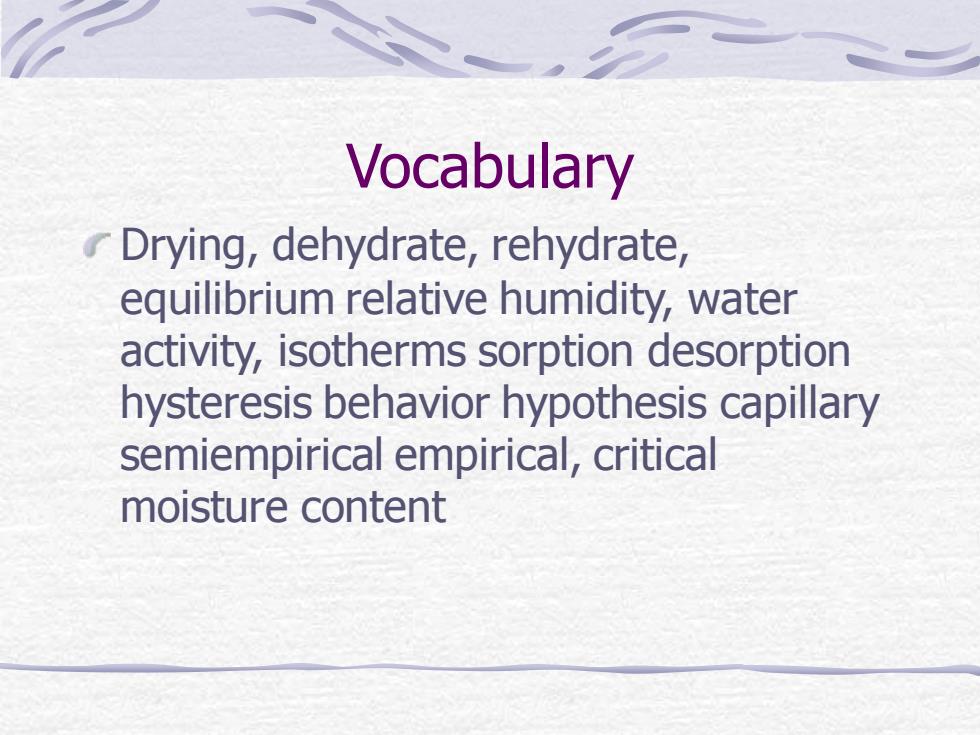
Vocabulary Drying, dehydrate, rehydrate, equilibrium relative humidity, water activity, isotherms sorption desorption hysteresis behavior hypothesis capillary semiempirical empirical, critical moisture content
Vocabulary Drying, dehydrate, rehydrate, equilibrium relative humidity, water activity, isotherms sorption desorption hysteresis behavior hypothesis capillary semiempirical empirical, critical moisture content
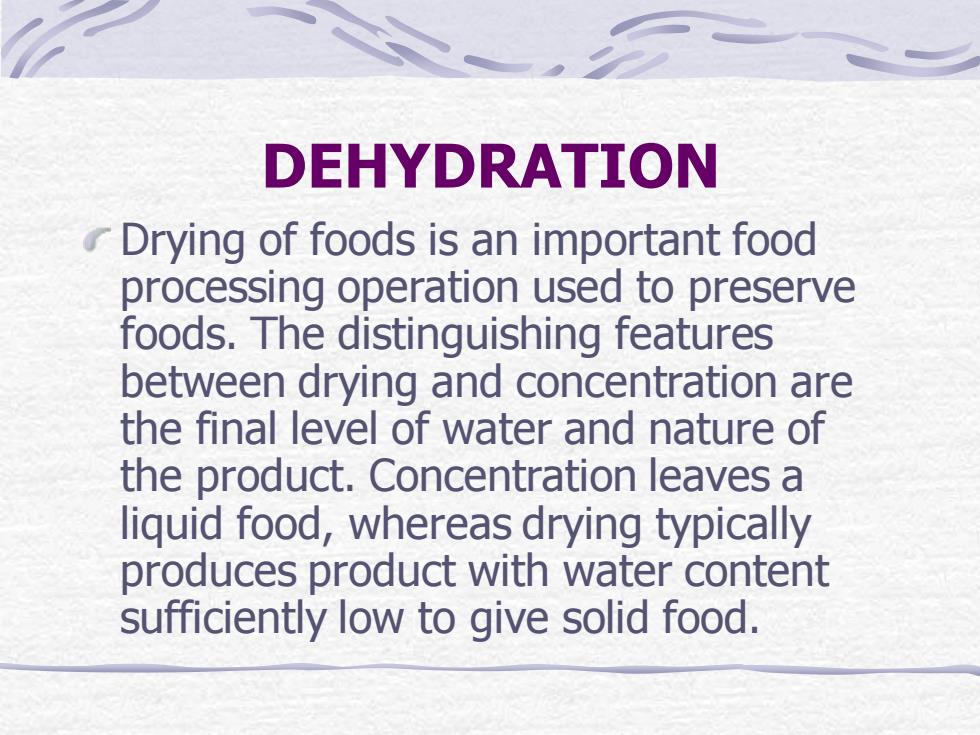
DEHYDRATION Drying of foods is an important food processing operation used to preserve foods. The distinguishing features between drying and concentration are the final level of water and nature of the product. Concentration leaves a liquid food, whereas drying typically produces product with water content sufficiently low to give solid food
DEHYDRATION Drying of foods is an important food processing operation used to preserve foods. The distinguishing features between drying and concentration are the final level of water and nature of the product. Concentration leaves a liquid food, whereas drying typically produces product with water content sufficiently low to give solid food
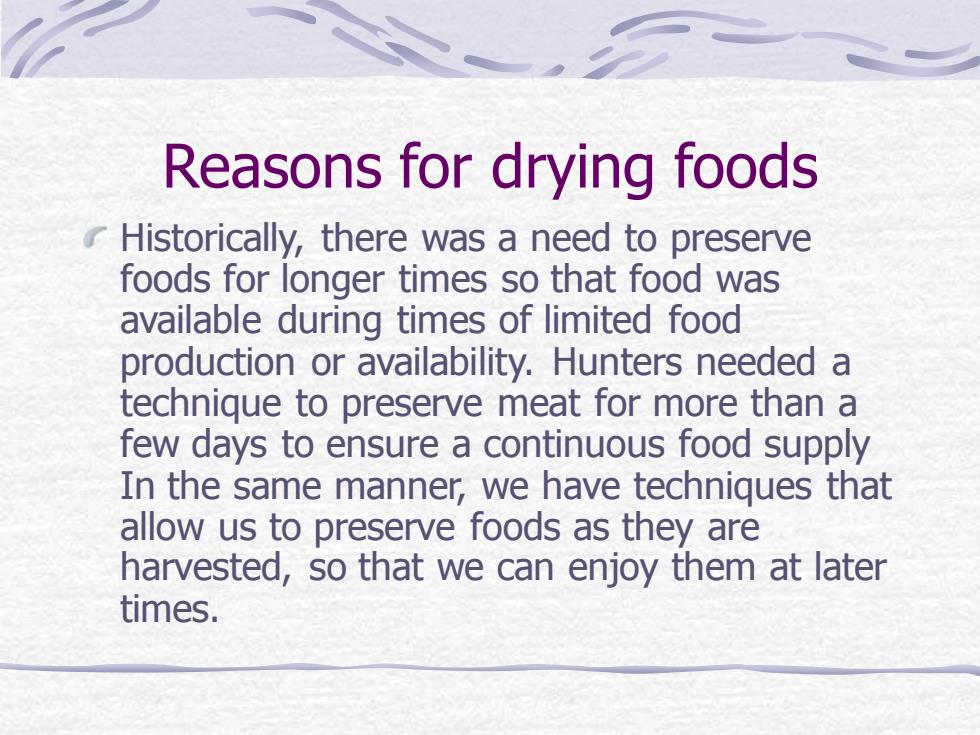
Reasons for drying foods Historically, there was a need to preserve foods for longer times so that food was available during times of limited food production or availability. Hunters needed a technique to preserve meat for more than a few days to ensure a continuous food supply In the same manner, we have techniques that allow us to preserve foods as they are harvested, so that we can enjoy them at later times
Reasons for drying foods Historically, there was a need to preserve foods for longer times so that food was available during times of limited food production or availability. Hunters needed a technique to preserve meat for more than a few days to ensure a continuous food supply In the same manner, we have techniques that allow us to preserve foods as they are harvested, so that we can enjoy them at later times
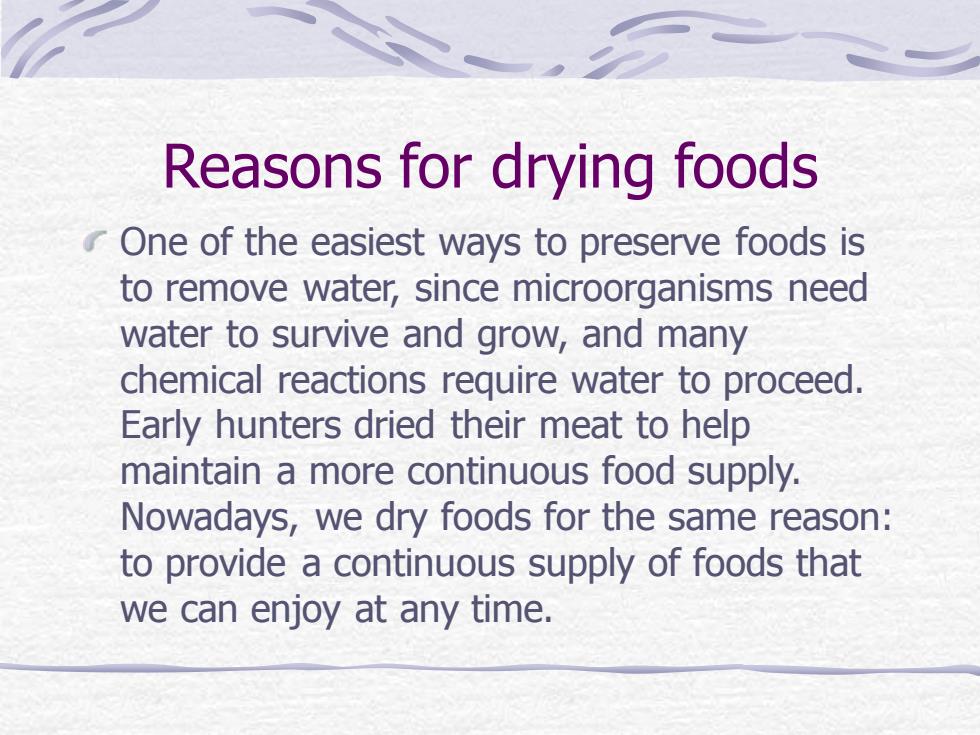
Reasons for drying foods One of the easiest ways to preserve foods is to remove water, since microorganisms need water to survive and grow, and many chemical reactions require water to proceed. Early hunters dried their meat to help maintain a more continuous food supply. Nowadays, we dry foods for the same reason: to provide a continuous supply of foods that we can enjoy at any time
Reasons for drying foods One of the easiest ways to preserve foods is to remove water, since microorganisms need water to survive and grow, and many chemical reactions require water to proceed. Early hunters dried their meat to help maintain a more continuous food supply. Nowadays, we dry foods for the same reason: to provide a continuous supply of foods that we can enjoy at any time
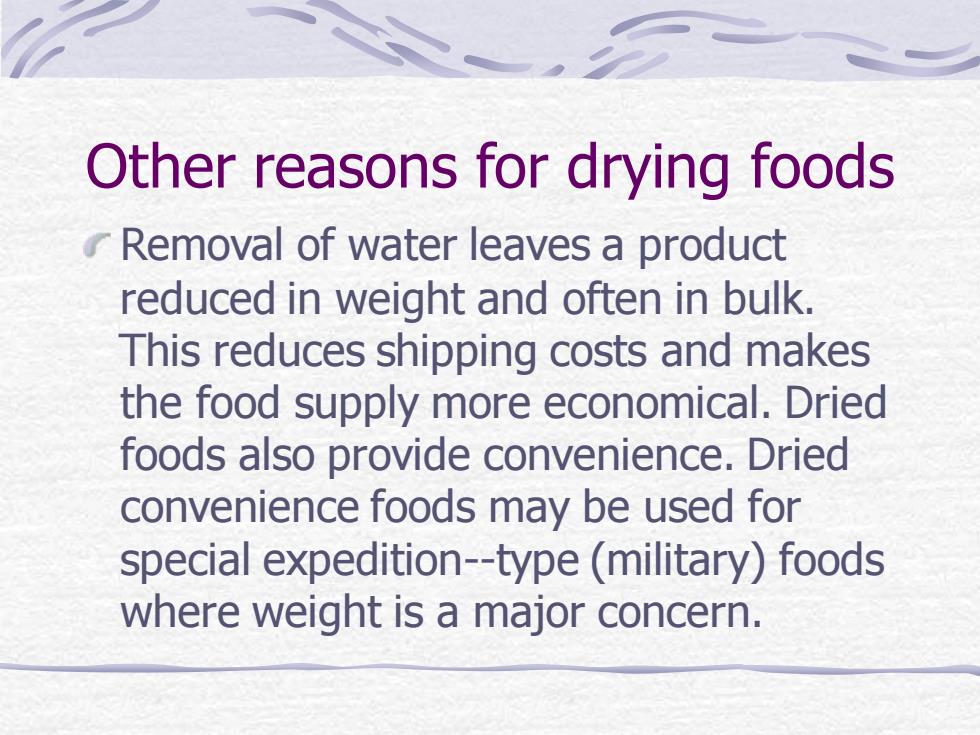
Other reasons for drying foods Removal of water leaves a product reduced in weight and often in bulk. This reduces shipping costs and makes the food supply more economical. Dried foods also provide convenience. Dried convenience foods may be used for special expedition-type (military) foods where weight is a major concern
Other reasons for drying foods Removal of water leaves a product reduced in weight and often in bulk. This reduces shipping costs and makes the food supply more economical. Dried foods also provide convenience. Dried convenience foods may be used for special expedition-type (military) foods where weight is a major concern
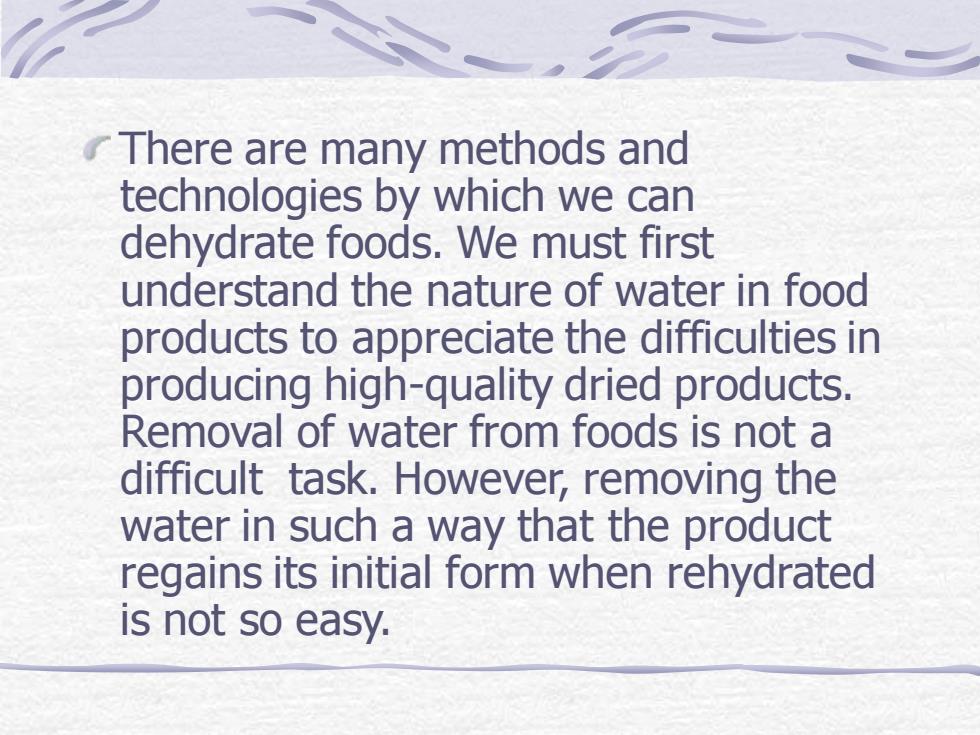
There are many methods and technologies by which we can dehydrate foods. We must first understand the nature of water in food products to appreciate the difficulties in producing high-quality dried products. Removal of water from foods is not a difficult task. However, removing the water in such a way that the product regains its initial form when rehydrated is not so easy
There are many methods and technologies by which we can dehydrate foods. We must first understand the nature of water in food products to appreciate the difficulties in producing high-quality dried products. Removal of water from foods is not a difficult task. However, removing the water in such a way that the product regains its initial form when rehydrated is not so easy
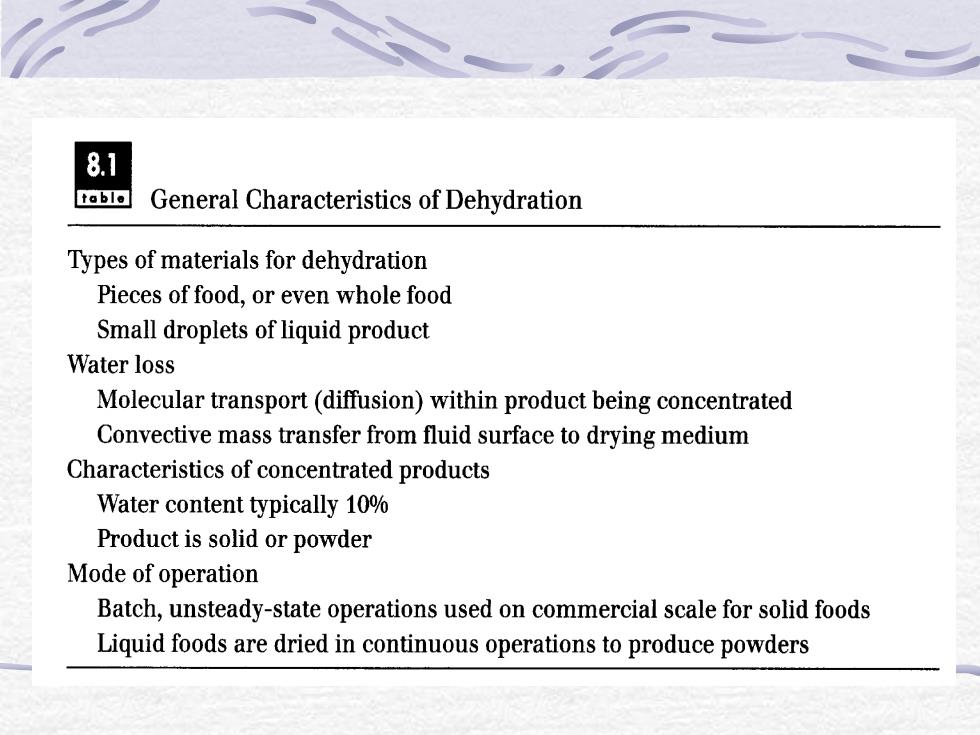
8.1 tabl回 General Characteristics of Dehydration Types of materials for dehydration Pieces of food,or even whole food Small droplets of liquid product Water loss Molecular transport(diffusion)within product being concentrated Convective mass transfer from fluid surface to drying medium Characteristics of concentrated products Water content typically 10% Product is solid or powder Mode of operation Batch,unsteady-state operations used on commercial scale for solid foods Liquid foods are dried in continuous operations to produce powders
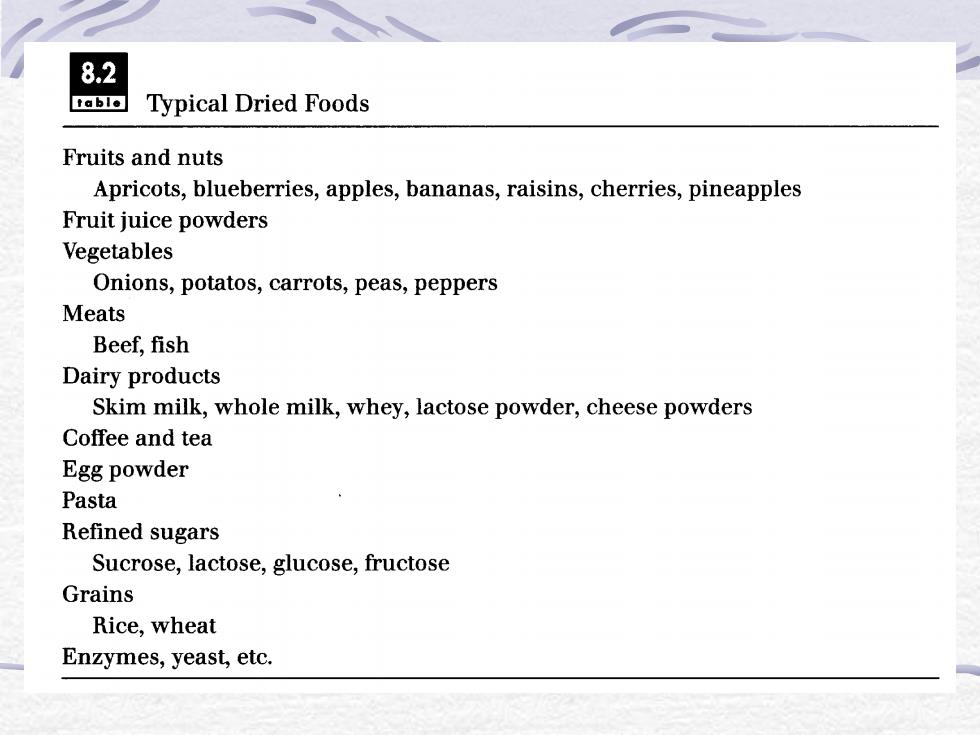
8.2 table Typical Dried Foods Fruits and nuts Apricots,blueberries,apples,bananas,raisins,cherries,pineapples Fruit juice powders Vegetables Onions,potatos,carrots,peas,peppers Meats Beef,fish Dairy products Skim milk,whole milk,whey,lactose powder,cheese powders Coffee and tea Egg powder Pasta Refined sugars Sucrose,lactose,glucose,fructose Grains Rice,wheat Enzymes,yeast,etc
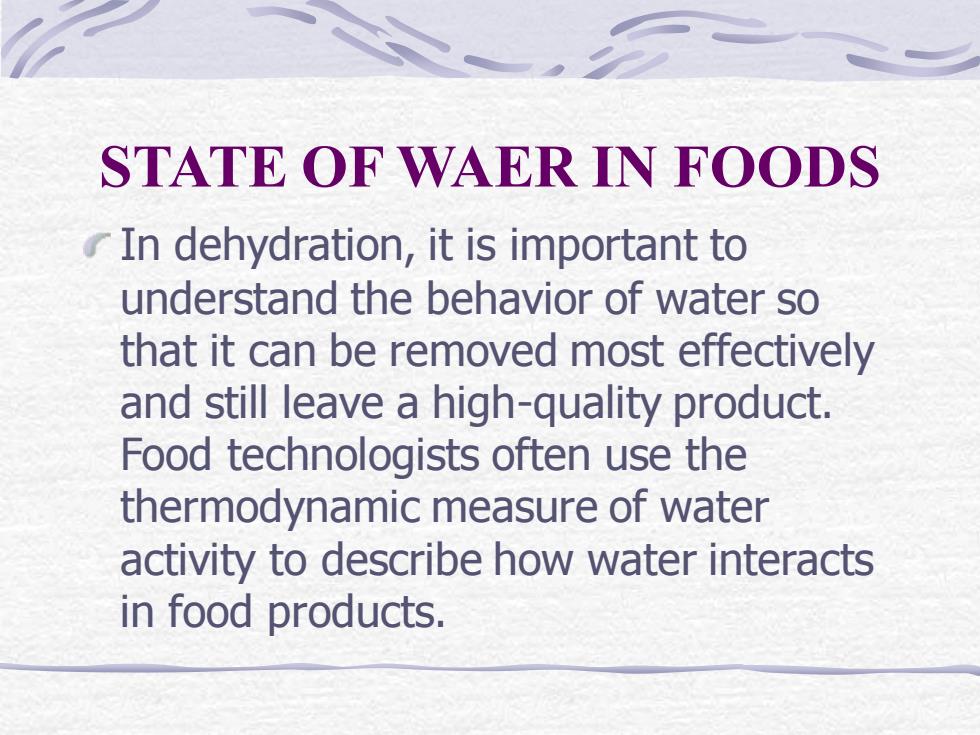
STATE OF WAER IN FOODS In dehydration, it is important to understand the behavior of water so that it can be removed most effectively and still leave a high-quality product. Food technologists often use the thermodynamic measure of water activity to describe how water interacts in food products
STATE OF WAER IN FOODS In dehydration, it is important to understand the behavior of water so that it can be removed most effectively and still leave a high-quality product. Food technologists often use the thermodynamic measure of water activity to describe how water interacts in food products